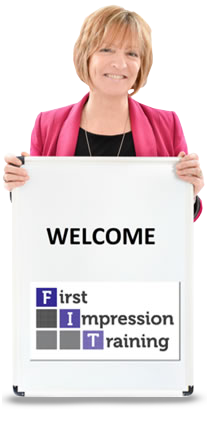I’m a big fan of Colin Shaw (Founder & CEO of Beyond Philosophy) and I can’t think of a single article he’s written or blog he’s posted where I haven’t silently screamed (in excitement not anger you understand!) “YES! YES! YES! indeed Colin – exactly what I’ve been waxing lyrical about for near on 40 years too!”
What’s the fuss all about?
It’s about understanding that, as Maya Angelou taught us all those years ago….people will forget what you say, they’ll forget what you do (even if you are a real GEM and Go the Extra Mile) but they will NEVER EVER forget how you make them FEEL.
84% of the customer experience is emotional! So we really do have to ‘get with the programme‘ to fully appreciate the impact of customer emotion on the level of loyalty, retention, referral and even revenue our business generates if we are going to show up and stand out like no one else in our field AND get that competitive advantage we’re all striving for.
For years now, customer-centric organisations have been measuring the customer experience, through various analytics and measurement tools such as the Net Promoter Score (NPS), although according to Shaw, while NPS is still a great metric for measuring customer loyalty, it only gives us an overview of whether or not our customer APPROVES of our Customer Experience and not how they FEEL (at an emotional level) about that experience.
And so the new metric is born – the Net Emotional Value (NEV) score is THE way to determine just how successful an organisation is when it comes to their Customer Experience and optimising their margins and profits! Although before we throw the baby out with the bath water, Colin Shaw points out we should remember “Of course the NPS is still important – in fact, our research shows that when the NEV is high, the NPS is high too!”
So what is the NEV?
In his latest blog, also featured in our favourite publication, Jonty Pearce’s Call Centre Helper, Colin Shaw explains why it is so important that customer-focused businesses get in tune with the value of using the NEV as a means of TRULY determining the customer’s level of loyalty, retention and experience overall. He explains its psychological meaning and impact as follows:
“The NEV refers to the single number that represents the emotional value you provide to your customers. To calculate the NEV, we determine the balance between the positive and negative emotions a customer feels about their experience with your organisation. The “Net” in NEV refers to the net effect of those emotions for customer loyalty and retention.”
But what are these emotions? When Shaw wrote his book, The DNA of Customer Experience: How emotions drive value, he worked with the London Business School and the Chair of Consumer Psychology in England to determine what emotions drive value for an organisation. They asked over 50,000 people from 100 industries in 40 countries to get these answers. Of the 4.5 million survey questions answered, 1.25 million responses were about what customers want, and another 1 million answers explained what customers feel. This research produced the framework they used to assign a value to feelings.
The baseline model identified 20 emotions, which they grouped into 4 clusters that drive and destroy value for the business. They called the model the ‘Hierarchy of Emotional Value’
The Hierarchy of Emotional Value
As you can see, some of the emotions drive a short-term spend while others drive a long-term spend. Furthermore, you can tell by the emotions and their grouping how they drive value in either direction.
Shaw uses the Hierarchy of Emotional Value to benchmark a company’s level of emotional engagement with its customers, something they refer to as an Emotional Signature, which every organisation has, whether they are deliberate about what it is or not. The emotions are divided into clusters and named for the 4 hidden ways they influence the customer experience – 1. The Advocacy Cluster 2. The Recommendation Cluster 3. The Attention Cluster and 4. The Destroying Cluster.
Advocacy Cluster
Made of only two emotions, Happy and Pleased, the Advocacy Cluster is crucial to your customer’s experience. People rarely think they are happy enough, so they are always striving to find more happiness than they have now. A customer experience should deliver pleasure in the form of fixes or treats that evoke these vital emotions from the participants.
Shaw explains he has a picture on the wall of his 3 children when they were young. They are wearing party clothes and his youngest is in a high chair with food smashed all over her face and the surrounding area. His eldest child is holding up her wrist showing a bracelet, which was a recent gift from him. He tells us that when he looks at the photo, it transports him to happy times when his children were young, which of course, was why he took the photo in the first place!
We all want a customer experience that makes people SO happy that they want to take a picture of it to remember later. Shaw states “If you don’t think that moment exists in your customer experience, then you have some work to do!”
Recommendation Cluster
This group includes Trusting, Valued, Cared for, Focused and Safe. These emotions are the foundations of customer loyalty. They are also the gateway emotions that allow you to pass to the pinnacle of the pyramid, the Advocacy Cluster.
Shaw tells the story of having bought a car, many years ago – before he even saw it, because his business manager had handled the transaction for him. The only time he could see the car was on a Saturday afternoon – and even though the salesman already had the order, he came in on his day off to show the car to Shaw personally. He was impressed that he would do this even though they had never met and he already had the deal. Shaw felt Cared for and Valued. As a result, he recommended this dealer to 4 other people over the next 4 months who went on to purchase from that organisation!
Attention Cluster
Five emotions comprise the Attention Cluster – Interested, Energetic, Stimulated, Exploratory, and Indulgent. This cluster is the only set of emotions that have a direct impact on short-term spending. However, this effect will wane and even backfire if you don’t tend to these emotions on a regular basis.
Shaw tells the story here of when he and his wife once tried a new restaurant that had opened near their home. Their first visit dazzled them with engaging staff and lots of personal attention. The food was exciting and unique to them and as a result, they had a lovely evening and then invited friends to join them there for a second visit. However, compared to the first time, it was pleasant, but that was all. Shaw says “It felt like a transaction and we were a bit embarrassed we had recommended the restaurant to our friends. We went once more, and it was more of the same, pleasant but not special. We now consider it only one of many so-so restaurants close to where we live. The restaurant experience didn’t maintain our interest after the first visit, and now we don’t pay attention to it”
Destroying Cluster
The Destroying Cluster include a list of emotions too, albeit a list of ones you want to avoid evoking! These include Irritated, Hurried, Neglected, Unhappy, Unsatisfied, Stressed, Disappointed and Frustrated. Evoking any of these emotions during your customer experience will cost you money, through lost revenue, lost opportunities and higher costs fixing the problems that result. They are also the only emotion group that is associated with effects on short-term spending, although not directly as with the Attention Cluster.
Shaw explains this Destroying Cluster with the following example: “My former cable company (Brighthouse) evoked all of these emotions more than once. That’s why they are now my former cable company! I’m sure each of you has an example of a company that “did you wrong” and so you left them? Chances are, you also made sure that you shared your story with as many people as you could, right!?”
Naturally, all the emotions listed in these 4 clusters are not the only ones that have positive or adverse effects on the outcome of customer experience. However, those identified in the 4 clusters represent feelings that are statistically significant and have proven to be directly linked to an increase or decrease in loyalty or customer spend. In other words, these emotions and their hidden influences are the reason your customers buy from you and then come back for more – or they are the reasons they don’t! Once you understand the type of emotional engagement you have with your customers and how it drives or destroys value for your organisation, you can design an emotional experience that is deliberate and not left to chance.
Why Is the NEV Relevant Today?
NEV is important to know about your business because it shows how you are doing with your Customer Experience. The philosophy behind it represents the understanding that 84% of your Customer Experience is emotional, sometimes at a conscious level and sometimes at a subconscious one – and these emotional reactions occur throughout a customer’s journey, on a moment-to-moment basis. There will be negative moments and positive moments in any Customer Experience. Organisations should work to provide an experience where the positive emotions (any of those in the top 3 clusters of the hierarchy) will outweigh the negative cluster. By focusing on tipping the balance toward the positive, you bring those customers back again, because they valued how you made them feel. The result is your business grows and so do your profits.
Shaw admits that there will be those organisations who are sceptical about the role emotional connection plays in a customer’s experience. They may feel that far more important is having a great product at a fair price and a price that has plenty of margin in it. He concludes they are right about part of that thinking. You should have an excellent product at a fair price with plenty of margin for it. Those concepts haven’t changed. What has changed in business today is that this is not enough. Competition has expanded to include a global marketplace and the barriers to entry have begun to fail, making it far easier for your competitors to offer a comparable product quickly. It’s not hard to see that the old way of doing business isn’t enough to be competitive anymore. To be competitive today, you have to have a great product at a fair price AND an excellent Customer Experience to go with it!
The Difference Between the NEV and NPS
Shaw’s insightful blog finishes by making the distinction and comparison between the NEV and the NPS. He concludes “Most organisations that have already accepted that the Customer Experience is the competitive differentiator have adopted the Net Promoter Score (NPS) as the metric by which they measure their success. The NPS is an excellent way to measure the customer’s opinion of your Customer Experience as it predicts how likely they are to recommend you to others. I am sure we can all agree that none of us would recommend a product or service that we felt was a horrible experience!
However, the NPS score as a metric has plateaued for many organisations. This plateau is the result of many factors, not least of which is that the easy things have been done to improve Customer Experience. To move the needle further on NPS, one needs to get down to the real work of improving a Customer Experience. This “real work” includes understanding the hidden reasons customers do what they do, the psychological experiences that drive their behaviour.
The NPS is a great metric, but it is limited. The NEV is the new way to define success for your Customer Experience. The NPS only tells you an overview of whether or not the customer approves of your Customer Experience. The NEV, on the other hand, shows the specifics of what’s working and when. It not only shows you where you need improvement, but it also shows you what you are doing right. And calculating the NEV is simple – it just requires you to determine the average positive emotions (from the Hierarchy) and subtract the average negative emotions (also from the Hierarchy). The result is the NEV, which can be a positive or negative number too, just like the NPS!”
Shaw recognises his explanation of this new, innovative customer metric is a very simplified version of a real world process that would require research and data analysis. However, he goes on to say, these are not complicated either – especially since they’ve already determined which emotions drive value for an organisation in their extensive research for the Hierarchy of Emotional Value.
The fact is emotions matter in Customer Experience – full stop! They matter enough that every team should be working to evoke the right ones. However, unless you measure your progress, you won’t know if you are achieving that. The NEV can help you see what’s happening in your Customer Experience at a truly emotional level – and how to make it the competitive differentiator that you need it to be, in order to show up and stand out like no one else in your field. Or put another way, to become that Purple Cow, as Seth Godin says in his brilliant book of the same title!
Well said Mr Shaw – as always, total sense in a very emotional way!
Until the next time….keep FIT!



